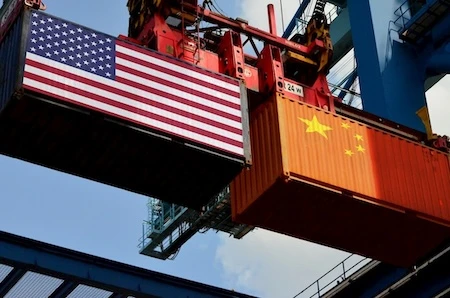


Global business marketplaces have become filled with the chatter of what will happen as a result of the U.S.-China Trade Deal, which has epitomized the much-needed step-forward from the two-year hostility between the two world powers.
Despite its magnitude and importance in world economics, however, this deal has seemingly failed to address a few crucial topics that will affect not only the United States and China but possibly trade marketplaces around the world.
Here are some of the loopholes within the U.S.-China Trade Deal:
Made in China 2025
China’s ambitious “Made in China 2025” plan aims to shy away from being the “world’s factory” of all goods and shift to producing high-value products and services. While this may seem like a good idea as this program will give the opportunity to Chinese companies to become world-class leaders in emerging technological industries. However, this is a direct threat to the American tech sector, as Chinese companies are known to outpace the American ones due to the subsidies that their government provides for them.
All in all, this leaves U.S. tech companies vulnerable to China’s 2025 plan, as China plans on dominating this industry.
Access to Foreign Financial Services in China
While the agreement addresses the idea of allowing market access for financial firms and banks, analysts say that this doesn’t mean that the access will be equally generated for American marketplaces in China.
Despite the fact that China has opened its financial services sector, this doesn’t simplify the process of U.S. companies using these services, as the sector has since become flooded with domestic digital payment plans. This may be an efficient alternative option for U.S. firms, but many analysts say that this isn’t the best option for those U.S. companies currently outsourcing their operations in China, as the belief states that U.S. payment firms will not be able to compete with the Chinese ones in the market due to the uneven treatment.
Enforcement and Monitoring
One of the key points highlighted in the U.S.-China Trade Deal was that China must comply with all U.S. protocols in all situations. Initially, the deal has a dispute resolution mechanism in place, which required China to begin consultations with the U.S. about any concerns or complaints. However, what most don’t know is the idea that the deal didn’t mention an enforcement monitoring system in place, which would technically make sure that these promises are kept.
The Future of Tariffs
While the agreement addressed the tariff decrease of Section 301, List 4A items from 15% to 7.5%, it also leaves out the answers to crucial questions like if and when the still-existing tariffs will go down.
While it seems that only the production companies are affected by the high tariffs, it is evident that consumers are affected by this more than anyone else, as they end up paying more for the same goods that they were purchasing for a much cheaper price before the dispute between China and the U.S. began two years ago.

Ongoing trade tensions between the United States and China continue to be the defining story of the 2019 global economy. What started off as an ongoing dialogue about the economic relationship between the two largest economies in the world has transformed

It has been established: ATA Carnets make the import/export experience of non-commercial goods so much easier, however, the usage of this document, has its own complications and concerns. Many Carnet holders often show concern about when to use each part

This serves as a promising stepping stone in the resolution of the ongoing Trade War between the two countries. On Dec. 13, the U.S. and China reached what leaders of both countries call the “Phase One” of a long-awaited trade agreement, which serves as

Explore the journey from ‘Buy Now’ to your home in our China-US Ocean Freight Shipping Guide. Discover the trade, environmental impact, and future of shipping.

Do you really need multiple customs brokers? Find out how a single freight forwarding and customs brokerage provider saves you time and money.

Why it’s so expensive to ship goods and to travel between multiple U.S. ports.

This two-day event highlighted integral information about technological advancements for freight-forwarders.

We examine how US-China trade tariffs have affected freight and logistics around the world.

The Los Angeles Business Journal has ranked Freight Right as the #19 Best Place to Work.

Some exciting news from our corner of the logistics world—our CEO, Robert Khachatryan, has been shortlisted for the The LA Times Studios - LA Executive Leadership Awards.